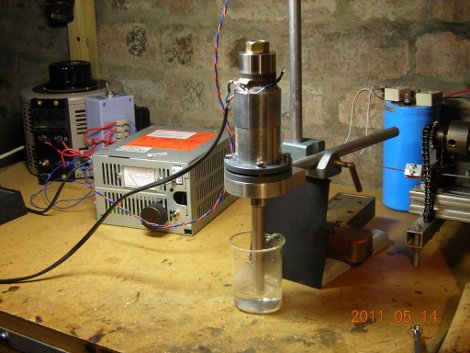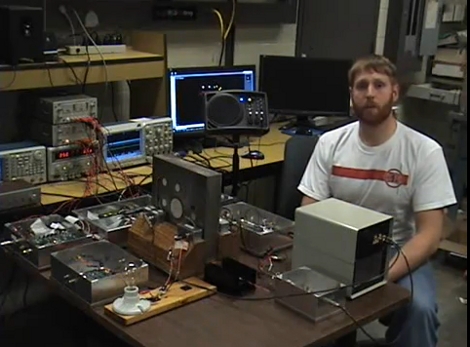
[Lindsay] has a wonderful writeup about a new toy in the shop, an ultrasonic transducer. The 28kHz, 70W bolt-clamped Langevin transducer by itself is not much use, you need a power supply, a horn to focus the energy, and a way to tune it. [Lindsay] starts off by showing how to find out the resonant frequency of the transducer, designing and building a high voltage high frequency AC power supply, and how to design a horn.
Not missing the meaning of DIY [Lindsay] casts and machines a horn for the transducer with a high level of precision as this will also tune the horn to the correct frequency. Once some brackets are machined the whole setup is put through some fun experiments in water and lemonaide, but the real purpose is to drill fine holes in glass for his home made Panaplex displays.
Join us after the break for a short video.











